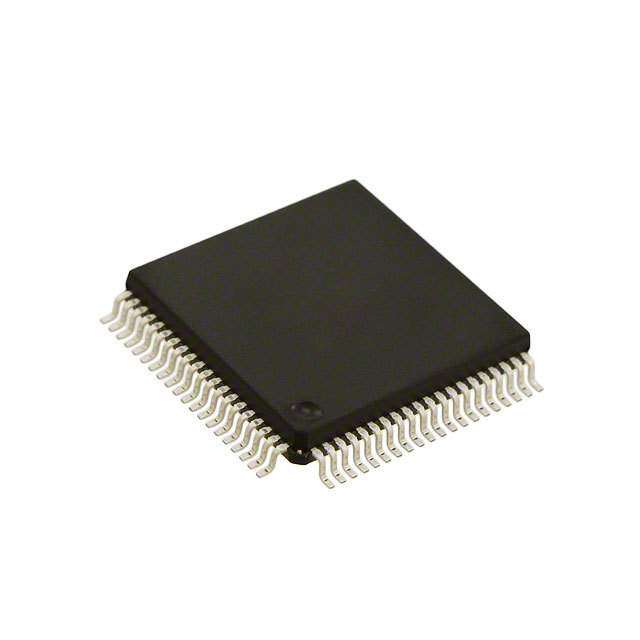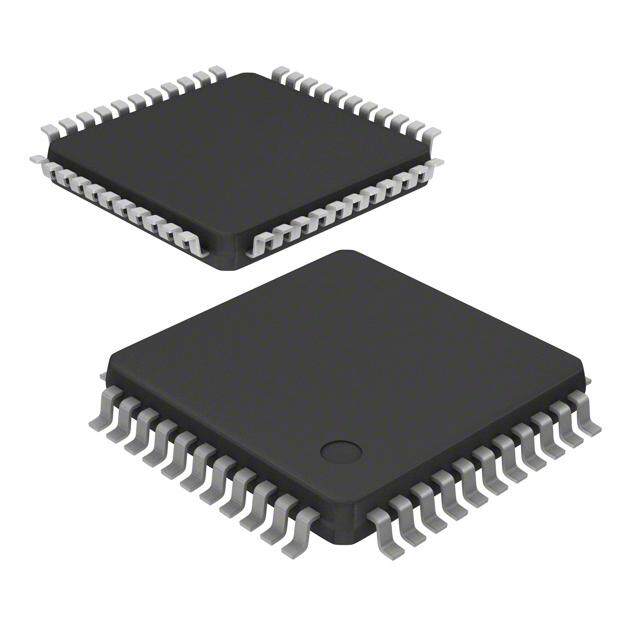ICGOO在线商城 > 集成电路(IC) > 嵌入式 - 微控制器 > ATTINY5-TS8R
- 型号: ATTINY5-TS8R
- 制造商: Atmel
- 库位|库存: xxxx|xxxx
- 要求:
| 数量阶梯 | 香港交货 | 国内含税 |
| +xxxx | $xxxx | ¥xxxx |
查看当月历史价格
查看今年历史价格
ATTINY5-TS8R产品简介:
ICGOO电子元器件商城为您提供ATTINY5-TS8R由Atmel设计生产,在icgoo商城现货销售,并且可以通过原厂、代理商等渠道进行代购。 ATTINY5-TS8R价格参考。AtmelATTINY5-TS8R封装/规格:嵌入式 - 微控制器, AVR 微控制器 IC AVR® ATtiny 8-位 10MHz 512B(256 x 16) 闪存 SOT-23。您可以下载ATTINY5-TS8R参考资料、Datasheet数据手册功能说明书,资料中有ATTINY5-TS8R 详细功能的应用电路图电压和使用方法及教程。
| 参数 | 数值 |
| 产品目录 | 集成电路 (IC) |
| 描述 | IC MCU 8BIT 512B FLASH SOT23-6 |
| EEPROM容量 | - |
| 产品分类 | |
| I/O数 | 4 |
| 品牌 | Atmel |
| 数据手册 | |
| 产品图片 |
|
| 产品型号 | ATTINY5-TS8R |
| RAM容量 | 32 x 8 |
| rohs | 无铅 / 符合限制有害物质指令(RoHS)规范要求 |
| 产品系列 | AVR® ATtiny |
| 产品培训模块 | http://www.digikey.cn/PTM/IndividualPTM.page?site=cn&lang=zhs&ptm=24997http://www.digikey.cn/PTM/IndividualPTM.page?site=cn&lang=zhs&ptm=25784http://www.digikey.cn/PTM/IndividualPTM.page?site=cn&lang=zhs&ptm=26162http://www.digikey.cn/PTM/IndividualPTM.page?site=cn&lang=zhs&ptm=26159http://www.digikey.cn/PTM/IndividualPTM.page?site=cn&lang=zhs&ptm=26180 |
| 供应商器件封装 | SOT-23 |
| 其它名称 | ATTINY5-TS8RDKR |
| 包装 | Digi-Reel® |
| 外设 | POR,PWM,WDT |
| 封装/外壳 | SOT-23-6 |
| 工作温度 | -40°C ~ 125°C |
| 振荡器类型 | 内部 |
| 数据转换器 | A/D 4x8b |
| 标准包装 | 1 |
| 核心处理器 | AVR |
| 核心尺寸 | 8-位 |
| 电压-电源(Vcc/Vdd) | 1.8 V ~ 5.5 V |
| 程序存储器类型 | 闪存 |
| 程序存储容量 | 512B(256 x 16) |
| 连接性 | - |
| 速度 | 10MHz |

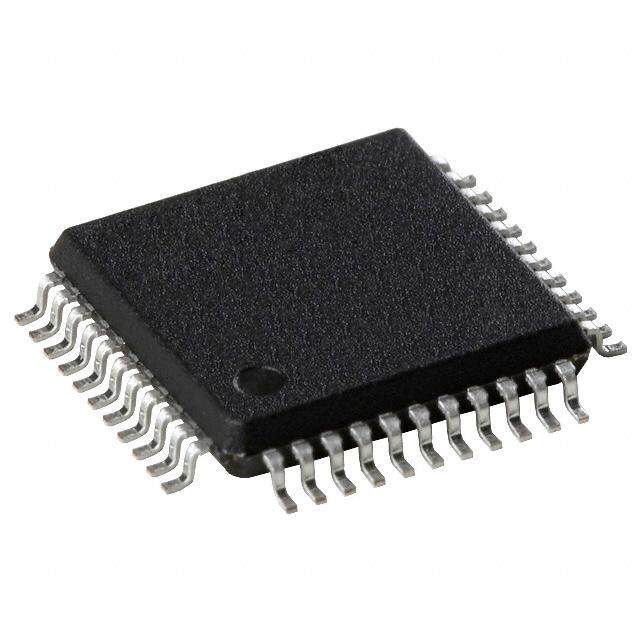


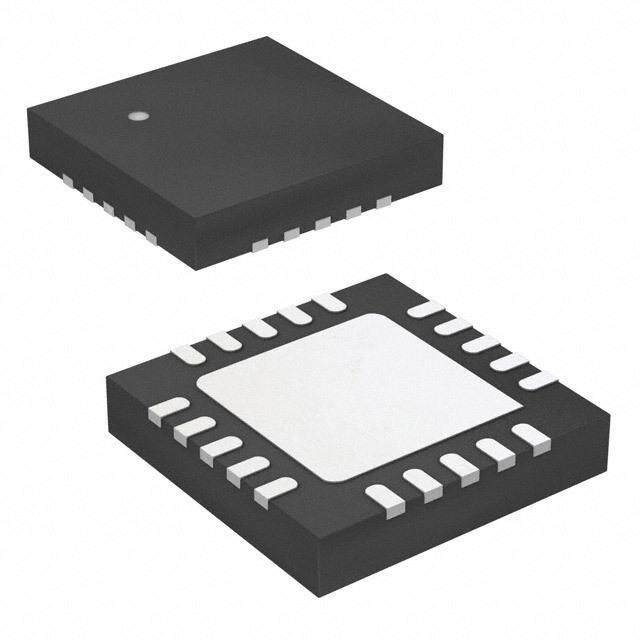
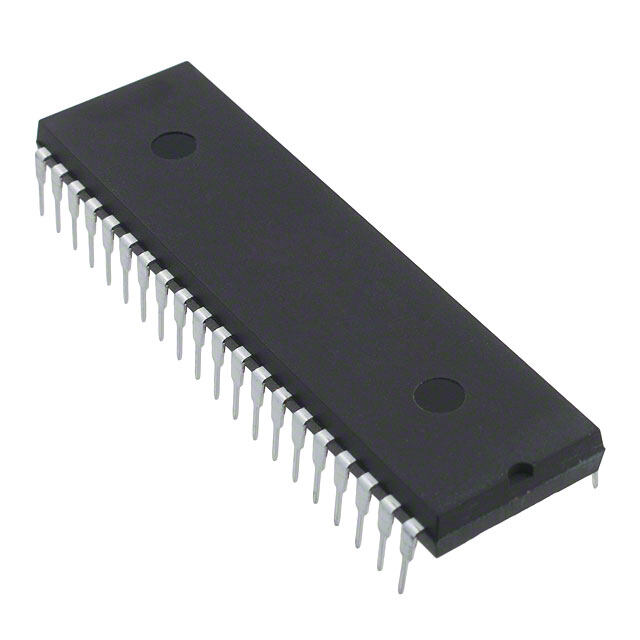

PDF Datasheet 数据手册内容提取
Atmel 8-bit AVR Microcontroller with 512/1024 Bytes In-System Programmable Flash ATtiny4 / ATtiny5 / ATtiny9 / ATiny10 DATASHEET SUMMARY Introduction The Atmel® ATtiny4/5/9/10 is a low-power CMOS 8-bit microcontroller based on the AVR® enhanced RISC architecture. By executing powerful instructions in a single clock cycle, the ATtiny4/5/9/10 achieves throughputs close to 1 MIPS per MHz. This empowers system designer to optimize the device for power consumption versus processing speed. Feature • High Performance, Low Power AVR® 8-Bit Microcontroller • Advanced RISC Architecture – 54 Powerful Instructions – Most Single Clock Cycle Execution – 16 x 8 General Purpose Working Registers – Fully Static Operation – Up to 12 MIPS Throughput at 12 MHz • Non-volatile Program and Data Memories – 512/1024 Bytes of In-System Programmable Flash Program Memory – 32 Bytes Internal SRAM – Flash Write/Erase Cycles: 10,000 – Data Retention: 20 Years at 85°C / 100 Years at 25°C • Peripheral Features – QTouch® Library Support for Capacitive Touch Sensing (1 Channel) – One 16-bit Timer/Counter with Prescaler and Two PWM Channels – Programmable Watchdog Timer with Separate On-chip Oscillator – 4-channel, 8-bit Analog to Digital Converter (ATtiny5/10, only) – On-chip Analog Comparator • Special Microcontroller Features – In-System Programmable (at 5V, only) Atmel-8127H-ATiny4/ ATiny5 /ATiny9/ ATiny10_Datasheet_Summary-11/2016
– External and Internal Interrupt Sources – Low Power Idle, ADC Noise Reduction, and Power-down Modes – Enhanced Power-on Reset Circuit – Programmable Supply Voltage Level Monitor with Interrupt and Reset – Internal Calibrated Oscillator • I/O and Packages – Four Programmable I/O Lines – 6-pin SOT and 8-pad UDFN • Operating Voltage: – 1.8 - 5.5V • Programming Voltage: – 5V • Speed Grade: – 0 - 4 MHz @ 1.8 - 5.5V – 0 - 8 MHz @ 2.7 - 5.5V – 0 - 12 MHz @ 4.5 - 5.5V • Industrial and Extended Temperature Ranges • Low Power Consumption – Active Mode: • 200μA at 1MHz and 1.8V Idle Mode: • 25μA at 1MHz and 1.8V – Power-down Mode: • <0.1μA at 1.8V Atmel ATtiny4 / ATtiny5 / ATtiny9 / ATiny10 [DATASHEET] 2 Atmel-8127H-ATiny4/ ATiny5 /ATiny9/ ATiny10_Datasheet_Summary-11/2016
Table of Contents Introduction......................................................................................................................1 Feature............................................................................................................................1 1. Pin Configurations.....................................................................................................4 1.1. Pin Descriptions............................................................................................................................4 2. Ordering Information..................................................................................................5 2.1. ATtiny4..........................................................................................................................................5 2.2. ATtiny5..........................................................................................................................................6 2.3. ATtiny9..........................................................................................................................................7 2.4. ATtiny10........................................................................................................................................8 3. Overview....................................................................................................................9 3.1. Block Diagram..............................................................................................................................9 3.2. Comparison of ATtiny4, ATtiny5, ATtiny9 and ATtiny10.............................................................10 4. General Information.................................................................................................11 4.1. Resources...................................................................................................................................11 4.2. Data Retention............................................................................................................................11 4.3. About Code Examples................................................................................................................11 4.4. Capacitive Touch Sensing..........................................................................................................11 5. Packaging Information.............................................................................................12 5.1. 6ST1...........................................................................................................................................12 5.2. 8MA4..........................................................................................................................................13 6. Errata.......................................................................................................................14 6.1. ATtiny4........................................................................................................................................14 6.2. ATtiny5........................................................................................................................................14 6.3. ATtiny9........................................................................................................................................15 6.4. ATtiny10......................................................................................................................................16
1. Pin Configurations Figure 1-1. Pinout of ATtiny4/5/9/10 SOT-23 (PCINT0/TPIDATA/OC0A/ADC0/AIN0) PB0 1 6 PB3 (RESET/PCINT3/ADC3) GND 2 5 VCC (PCINT1/TPICLK/CLKI/ICP0/OC0B/ADC1/AIN1) PB1 3 4 PB2 (T0/CLKO/PCINT2/INT0/ADC2) UDFN (PCINT1/TPICLK/CLKI/ICP0/OC0B/ADC1/AIN1) PB1 1 8 PB2 (T0/CLKO/PCINT2/INT0/ADC2) NC 2 7 VCC NC 3 6 PB3 (RESET/PCINT3/ADC3) GND 4 5 PB0 (AIN0/ADC0/OC0A/TPIDATA/PCINT0) Power Digital Analog Clock GND NC 1.1. Pin Descriptions 1.1.1. VCC Digital supply voltage. 1.1.2. GND Ground. 1.1.3. Port B (PB[3:0]) This is a 4-bit, bi-directional I/O port with internal pull-up resistors, individually selectable for each bit. The output buffers have symmetrical drive characteristics, with both high sink and source capability. As inputs, the port pins that are externally pulled low will source current if pull-up resistors are activated. Port pins are tri-stated when a reset condition becomes active, even if the clock is not running. 1.1.4. RESET Reset input. A low level on this pin for longer than the minimum pulse length will generate a reset, even if the clock is not running and provided the reset pin has not been disabled. The minimum pulse length is given in System and Reset Characteristics of Electrical Characteristics. Shorter pulses are not guaranteed to generate a reset. The reset pin can also be used as a (weak) I/O pin. Atmel ATtiny4 / ATtiny5 / ATtiny9 / ATiny10 [DATASHEET] 4 Atmel-8127H-ATiny4/ ATiny5 /ATiny9/ ATiny10_Datasheet_Summary-11/2016
2. Ordering Information 2.1. ATtiny4 Supply Voltage Speed (1) Temperature Package (2) Ordering Code (3) 1.8 – 5.5V 12MHz 6ST1 ATTINY4-TSUR(5) Industrial ATTINY4-TSHR(6)(7) (-40°C to 85°C) (4) 8MA4 ATTINY4-MAHR (7) 10MHz 6ST1 ATTINY4-TSFR(5) Extended ATTINY4-TS8R (6)(7) (-40°C to 125°C) (8) Note: 1. For speed vs. supply voltage, see section Speed. 2. All packages are Pb-free, halide-free and fully green and they comply with the European directive for Restriction of Hazardous Substances (RoHS). NiPdAu finish. 3. Tape and reel. 4. Can also be supplied in wafer form. Contact your local sales office for ordering information and minimum quantities. 5. Marking details: – Top mark 1st line: ddddTY – Top mark 2nd line: wwxxx dddd= device, special code T= Type Y= Year last digit ww= calendar workweek xxx = trace code 6. Not recommended for new designs.TPUBSTINY-216 7. Top/bottom markings: – Top: T4x, where x = die revision – Bottom: zHzzz or z8zzz, where H = (-40°C to 85°C), and 8 = (-40°C to 125°C) 8. For typical and Electrical characteristics for this device please consult Appendix A, ATtiny4/5/9/10 Specification at 125°C. Table 2-1. Package Type 6ST1 6-lead, 2.90 x 1.60 mm Plastic Small Outline Package (SOT23) 8MA4 8-pad, 2 x 2 x 0.6 mm Plastic Ultra Thin Dual Flat No Lead (UDFN) Atmel ATtiny4 / ATtiny5 / ATtiny9 / ATiny10 [DATASHEET] 5 Atmel-8127H-ATiny4/ ATiny5 /ATiny9/ ATiny10_Datasheet_Summary-11/2016
2.2. ATtiny5 Supply Voltage Speed (1) Temperature Package (2) Ordering Code (3) 1.8 – 5.5V 12MHz 6ST1 ATTINY5-TSUR(5) Industrial ATTINY5-TSHR(6)(7) (-40°C to 85°C) (4) 8MA4 ATTINY5-MAHR (7) 10MHz 6ST1 ATTINY5-TSFR(5) Extended ATTINY5-TS8R (6)(7) (-40°C to 125°C) (8) Note: 1. For speed vs. supply voltage, see section Speed. 2. All packages are Pb-free, halide-free and fully green and they comply with the European directive for Restriction of Hazardous Substances (RoHS). NiPdAu finish. 3. Tape and reel. 4. Can also be supplied in wafer form. Contact your local sales office for ordering information and minimum quantities. 5. Marking details: – Top mark 1st line: ddddTY – Top mark 2nd line: wwxxx dddd= device, special code T= Type Y= Year last digit ww= calendar workweek xxx = trace code 6. Not recommended for new designs.TPUBSTINY-216 7. Top/bottomside markings: – Top: T5x, where x = die revision – Bottom: zHzzz or z8zzz, where H = (-40°C to 85°C), and 8 = (-40°C to 125°C) 8. For typical and Electrical characteristics for this device please consult Appendix A, ATtiny4/5/9/10 Specification at 125°C. Table 2-2. Package Type 6ST1 6-lead, 2.90 x 1.60 mm Plastic Small Outline Package (SOT23) 8MA4 8-pad, 2 x 2 x 0.6 mm Plastic Ultra Thin Dual Flat No Lead (UDFN) Atmel ATtiny4 / ATtiny5 / ATtiny9 / ATiny10 [DATASHEET] 6 Atmel-8127H-ATiny4/ ATiny5 /ATiny9/ ATiny10_Datasheet_Summary-11/2016
2.3. ATtiny9 Supply Voltage Speed (1) Temperature Package (2) Ordering Code (3) 1.8 – 5.5V 12MHz 6ST1 ATTINY9-TSUR(5) Industrial ATTINY9-TSHR(6)(7) (-40°C to 85°C) (4) 8MA4 ATTINY9-MAHR (7) 10MHz 6ST1 ATTINY9-TSFR(5) Extended ATTINY9-TS8R (6)(7) (-40°C to 125°C) (8) Note: 1. For speed vs. supply voltage, see section Speed. 2. All packages are Pb-free, halide-free and fully green and they comply with the European directive for Restriction of Hazardous Substances (RoHS). NiPdAu finish. 3. Tape and reel. 4. Can also be supplied in wafer form. Contact your local sales office for ordering information and minimum quantities. 5. Marking details: – Top mark 1st line: ddddTY – Top mark 2nd line: wwxxx dddd= device, special code T= Type Y= Year last digit ww= calendar workweek xxx = trace code 6. Not recommended for new designs.TPUBSTINY-216 7. Top/bottomside markings: – Top: T9x, where x = die revision – Bottom: zHzzz or z8zzz, where H = (-40°C to 85°C), and 8 = (-40°C to 125°C) 8. For typical and Electrical characteristics for this device please consult Appendix A, ATtiny4/5/9/10 Specification at 125°C. Table 2-3. Package Type 6ST1 6-lead, 2.90 x 1.60 mm Plastic Small Outline Package (SOT23) 8MA4 8-pad, 2 x 2 x 0.6 mm Plastic Ultra Thin Dual Flat No Lead (UDFN) Atmel ATtiny4 / ATtiny5 / ATtiny9 / ATiny10 [DATASHEET] 7 Atmel-8127H-ATiny4/ ATiny5 /ATiny9/ ATiny10_Datasheet_Summary-11/2016
2.4. ATtiny10 Supply Voltage Speed (1) Temperature Package (2) Ordering Code (3) 1.8 – 5.5V 12MHz 6ST1 ATTINY10-TSUR(5) Industrial ATTINY10-TSHR(6)(7) (-40°C to 85°C) (4) 8MA4 ATTINY10-MAHR (7) 10MHz 6ST1 ATTINY10-TSFR(5) Extended ATTINY10-TS8R (6)(7) (-40°C to 125°C) (8) Note: 1. For speed vs. supply voltage, see section Speed. 2. All packages are Pb-free, halide-free and fully green and they comply with the European directive for Restriction of Hazardous Substances (RoHS). NiPdAu finish. 3. Tape and reel. 4. Can also be supplied in wafer form. Contact your local sales office for ordering information and minimum quantities. 5. Marking details: – Top mark 1st line: ddddTY – Top mark 2nd line: wwxxx dddd= device, special code T= Type Y= Year last digit ww= calendar workweek xxx = trace code 6. Not recommended for new designs.TPUBSTINY-216 7. Top/bottomside markings: – Top: T10x, where x = die revision – Bottom: zHzzz or z8zzz, where H = (-40°C to 85°C), and 8 = (-40°C to 125°C) 8. For typical and Electrical characteristics for this device please consult Appendix A, ATtiny4/5/9/10 Specification at 125°C. Table 2-4. Package Type 6ST1 6-lead, 2.90 x 1.60 mm Plastic Small Outline Package (SOT23) 8MA4 8-pad, 2 x 2 x 0.6 mm Plastic Ultra Thin Dual Flat No Lead (UDFN) Atmel ATtiny4 / ATtiny5 / ATtiny9 / ATiny10 [DATASHEET] 8 Atmel-8127H-ATiny4/ ATiny5 /ATiny9/ ATiny10_Datasheet_Summary-11/2016
3. Overview This device is low-power CMOS 8-bit microcontrollers based on the compact AVR enhanced RISC architecture. By executing powerful instructions in a single clock cycle, the device achieve throughputs approaching 1 MIPS per MHz, allowing the system designer to optimize power consumption versus processing speed. 3.1. Block Diagram Figure 3-1. Block Diagram SRAM CPU FLASH Clock generation Power 8MHz Calib Osc management I/O PB[3:0] External clock and clock PORTS control 128 kHz Internal Osc D Interrupt PCINT[3:0] INT0 A Vcc T Watchdog A Power B ADC[7:0] ADC Timer U Vcc RESET Supervision S POR & RESET AIN0 GND Internal AC AIN1 Reference ACO ADCMUX OC0A/B TC 0 T0 (16-bit) ICP0 3.1.1. Description The AVR core combines a rich instruction set with 16 general purpose working registers and system registers. All registers are directly connected to the Arithmetic Logic Unit (ALU), allowing two independent registers to be accessed in one single instruction executed in one clock cycle. The resulting architecture is compact and code efficient while achieving throughputs up to ten times faster than conventional CISC microcontrollers. This device provides the following features: 512/1024 byte of In-System Programmable Flash, 32 bytes of SRAM, four general purpose I/O lines, 16 general purpose working registers, a 16-bit timer/counter with two PWM channels, internal and external interrupts, a programmable watchdog timer with internal oscillator, an internal calibrated oscillator, and four software selectable power saving modes. ATtiny5/10 are also equipped with a four-channel and 8-bit Analog to Digital Converter (ADC). Idle mode stops the CPU while allowing the SRAM, timer/counter, ADC (ATtiny5/10, only), analog comparator, and interrupt system to continue functioning. ADC Noise Reduction mode minimizes switching noise during ADC conversions by stopping the CPU and all I/O modules except the ADC. In Power-down mode registers keep their contents and all chip functions are disabled until the next interrupt Atmel ATtiny4 / ATtiny5 / ATtiny9 / ATiny10 [DATASHEET] 9 Atmel-8127H-ATiny4/ ATiny5 /ATiny9/ ATiny10_Datasheet_Summary-11/2016
or hardware reset. In Standby mode, the oscillator is running while the rest of the device is sleeping, allowing very fast start-up combined with low power consumption. The device is manufactured using Atmel’s high density Non-Volatile Memory (NVM) technology. The on- chip, in-system programmable Flash allows program memory to be re-programmed in-system by a conventional, non-volatile memory programmer. The ATtiny4/5/9/10AVR are supported by a suite of program and system development tools, including macro assemblers and evaluation kits. 3.2. Comparison of ATtiny4, ATtiny5, ATtiny9 and ATtiny10 A comparison of the devices is shown in the table below. Table 3-1. Differences between ATtiny4, ATtiny5, ATtiny9 and ATtiny10 Device Flash ADC Signature ATtiny4 512 bytes No 0x1E 0x8F 0x0A ATtiny5 512 bytes Yes 0x1E 0x8F 0x09 ATtiny9 1024 bytes No 0x1E 0x90 0x08 ATtiny10 1024 bytes Yes 0x1E 0x90 0x03 Atmel ATtiny4 / ATtiny5 / ATtiny9 / ATiny10 [DATASHEET] 10 Atmel-8127H-ATiny4/ ATiny5 /ATiny9/ ATiny10_Datasheet_Summary-11/2016
4. General Information 4.1. Resources A comprehensive set of development tools, application notes, and datasheets are available for download on http://www.atmel.com/avr. 4.2. Data Retention Reliability Qualification results show that the projected data retention failure rate is much less than 1 PPM over 20 years at 85°C or 100 years at 25°C. 4.3. About Code Examples This documentation contains simple code examples that briefly show how to use various parts of the device. These code examples assume that the part specific header file is included before compilation. Be aware that not all C compiler vendors include bit definitions in the header files and interrupt handling in C is compiler dependent. Confirm with the C compiler documentation for more details. For I/O Registers located in extended I/O map, “IN”, “OUT”, “SBIS”, “SBIC”, “CBI”, and “SBI” instructions must be replaced with instructions that allow access to extended I/O. Typically “LDS” and “STS” combined with “SBRS”, “SBRC”, “SBR”, and “CBR”. 4.4. Capacitive Touch Sensing 4.4.1. QTouch Library The Atmel® QTouch® Library provides a simple to use solution to realize touch sensitive interfaces on most Atmel AVR® microcontrollers. The QTouch Library includes support for the Atmel QTouch and Atmel QMatrix® acquisition methods. Touch sensing can be added to any application by linking the appropriate Atmel QTouch Library for the AVR Microcontroller. This is done by using a simple set of APIs to define the touch channels and sensors, and then calling the touch sensing API’s to retrieve the channel information and determine the touch sensor states. The QTouch Library is FREE and downloadable from the Atmel website at the following location: http:// www.atmel.com/technologies/touch/. For implementation details and other information, refer to the Atmel QTouch Library User Guide - also available for download from the Atmel website. Atmel ATtiny4 / ATtiny5 / ATtiny9 / ATiny10 [DATASHEET] 11 Atmel-8127H-ATiny4/ ATiny5 /ATiny9/ ATiny10_Datasheet_Summary-11/2016
5. Packaging Information 5.1. 6ST1 Figure 5-1. 6ST1 D 6 5 4 A E E1 A2 A Pin #1 ID 0.10 C A SEATING PLANE 1 2 3 A1 C Side View b e Top View A2 A 0.10 C SEATING PLANE c 0.25 A1 C SEATING PLANE View A-A O C SEE VIEW B L View B COMMON DIMENSIONS (Unit of Measure = mm) SYMBOL MIN NOM MAX NOTE A – – 1.45 A1 0 – 0.15 A2 0.90 – 1.30 D 2.80 2.90 3.00 2 E 2.60 2.80 3.00 E1 1.50 1.60 1.75 L 0.30 0.45 0.55 Notes: 1. This package is compliant with JEDEC specifcation MO-178 Variation AB 2. Dimension D does not include mold Flash, protrusions or gate burrs. e 0.95 BSC Mold Flash, protrustion or gate burrs shall not exceed 0.25 mm per end. b 0.30 – 0.50 3 3. Dimension b does not include dambar protrusion. Allowable dambar protrusion shall not cause the lead width to exceed the maximum c 0.09 – 0.20 b dimension by more than 0.08 mm θ 0° – 8° 4. Die is facing down after trim/form. 6/30/08 TITLE GPC DRAWING NO. REV. Package Drawing Contact: 6ST1, 6-lead, 2.90 x 1.60 mm Plastic Small Outline packagedrawings@atmel.com Package (SOT23) TAQ 6ST1 A Atmel ATtiny4 / ATtiny5 / ATtiny9 / ATiny10 [DATASHEET] 12 Atmel-8127H-ATiny4/ ATiny5 /ATiny9/ ATiny10_Datasheet_Summary-11/2016
5.2. 8MA4 Figure 5-2. 8MA4 8x 0.05 c 8 7 6 5 c 0.05c E SIDE VIEW Pin 1 ID 1 2 3 4 D A1 A TOP VIEW D2 e 5 8 COMMON DIMENSIONS (Unit of Measure = mm) K SYMBOL MIN NOM MAX NOTE A – – 0.60 E2 C0.2 A1 0.00 – 0.05 b 0.20 – 0.30 D 1.95 2.00 2.05 L D2 1.40 1.50 1.60 4 1 E 1.95 2.00 2.05 b E2 0.80 0.90 1.00 BOTTOM VIEW e – 0.50 – L 0.20 0.30 0.40 K 0.20 – – Note: 1. ALL DIMENSIONS ARE IN mm. ANGLES IN DEGREES. 2. C OPLANARITY APPLIES TO THE EXPOSED PAD AS WELL AS THE TERMINALS COPLANARITY SHALL NOT EXCEED 0.05 mm. 3. WARPAGE SHALL NOT EXCEED 0.05 mm. 4. REFER JEDEC MO-236/MO-252 12/17/09 TITLE GPC DRAWING NO. REV. Package Drawing Contact: 8PAD, 2x2x0.6 mm body, 0.5 mm pitch, packagedrawings@atmel.com 0.9x1.5 mm exposed pad, Saw singulated YAG 8MA4 A Thermally enhanced plastic ultra thin dual flat no lead package (UDFN/USON) Atmel ATtiny4 / ATtiny5 / ATtiny9 / ATiny10 [DATASHEET] 13 Atmel-8127H-ATiny4/ ATiny5 /ATiny9/ ATiny10_Datasheet_Summary-11/2016
6. Errata 6.1. ATtiny4 6.1.1. Rev. E • Programming Lock Bits 1. Programming Lock Bits Programming Lock Bits to a lock mode equal or lower than the current causes one word of Flash to be corrupted. The location of the corruption is random. Problem Fix / Workaround When programming Lock Bits, make sure lock mode is not set to present, or lower levels. 6.1.2. Rev. D • ESD HBM (ESD STM 5.1) level ±1000V • Programming Lock Bits 1. ESD HBM (ESD STM 5.1) level ±1000V The device meets ESD HBM (ESD STM 5.1) level ±1000V. Problem Fix / Workaround Always use proper ESD protection measures (Class 1C) when handling integrated circuits before and during assembly. 2. Programming Lock Bits Programming Lock Bits to a lock mode equal or lower than the current causes one word of Flash to be corrupted. The location of the corruption is random. Problem Fix / Workaround When programming Lock Bits, make sure lock mode is not set to present, or lower levels. 6.1.3. Rev. A – C Not sampled. 6.2. ATtiny5 6.2.1. Rev. E • Programming Lock Bits 1. Programming Lock Bits Programming Lock Bits to a lock mode equal or lower than the current causes one word of Flash to be corrupted. The location of the corruption is random. Problem Fix / Workaround When programming Lock Bits, make sure lock mode is not set to present, or lower levels. Atmel ATtiny4 / ATtiny5 / ATtiny9 / ATiny10 [DATASHEET] 14 Atmel-8127H-ATiny4/ ATiny5 /ATiny9/ ATiny10_Datasheet_Summary-11/2016
6.2.2. Rev. D • ESD HBM (ESD STM 5.1) level ±1000V • Programming Lock Bits 1. ESD HBM (ESD STM 5.1) level ±1000V The device meets ESD HBM (ESD STM 5.1) level ±1000V. Problem Fix / Workaround Always use proper ESD protection measures (Class 1C) when handling integrated circuits before and during assembly. 2. Programming Lock Bits Programming Lock Bits to a lock mode equal or lower than the current causes one word of Flash to be corrupted. The location of the corruption is random. Problem Fix / Workaround When programming Lock Bits, make sure lock mode is not set to present, or lower levels. 6.2.3. Rev. A – C Not sampled. 6.3. ATtiny9 6.3.1. Rev. E • Programming Lock Bits 1. Programming Lock Bits Programming Lock Bits to a lock mode equal or lower than the current causes one word of Flash to be corrupted. The location of the corruption is random. Problem Fix / Workaround When programming Lock Bits, make sure lock mode is not set to present, or lower levels. 6.3.2. Rev. D • ESD HBM (ESD STM 5.1) level ±1000V • Programming Lock Bits 1. ESD HBM (ESD STM 5.1) level ±1000V The device meets ESD HBM (ESD STM 5.1) level ±1000V. Problem Fix / Workaround Always use proper ESD protection measures (Class 1C) when handling integrated circuits before and during assembly. 2. Programming Lock Bits Programming Lock Bits to a lock mode equal or lower than the current causes one word of Flash to be corrupted. The location of the corruption is random. Problem Fix / Workaround When programming Lock Bits, make sure lock mode is not set to present, or lower levels. Atmel ATtiny4 / ATtiny5 / ATtiny9 / ATiny10 [DATASHEET] 15 Atmel-8127H-ATiny4/ ATiny5 /ATiny9/ ATiny10_Datasheet_Summary-11/2016
6.3.3. Rev. A – C Not sampled. 6.4. ATtiny10 6.4.1. Rev. E • Programming Lock Bits 1. Programming Lock Bits Programming Lock Bits to a lock mode equal or lower than the current causes one word of Flash to be corrupted. The location of the corruption is random. Problem Fix / Workaround When programming Lock Bits, make sure lock mode is not set to present, or lower levels. 6.4.2. Rev. C – D • ESD HBM (ESD STM 5.1) level ±1000V • Programming Lock Bits 1. ESD HBM (ESD STM 5.1) level ±1000V The device meets ESD HBM (ESD STM 5.1) level ±1000V. Problem Fix / Workaround Always use proper ESD protection measures (Class 1C) when handling integrated circuits before and during assembly. 2. Programming Lock Bits Programming Lock Bits to a lock mode equal or lower than the current causes one word of Flash to be corrupted. The location of the corruption is random. Problem Fix / Workaround When programming Lock Bits, make sure lock mode is not set to present, or lower levels. 6.4.3. Rev. A – B Not sampled. Atmel ATtiny4 / ATtiny5 / ATtiny9 / ATiny10 [DATASHEET] 16 Atmel-8127H-ATiny4/ ATiny5 /ATiny9/ ATiny10_Datasheet_Summary-11/2016
Atmel Corporation 1600 Technology Drive, San Jose, CA 95110 USA T: (+1)(408) 441.0311 F: (+1)(408) 436.4200 | www.atmel.com © 2016 Atmel Corporation. / Rev.: Atmel-8127H-ATiny4/ ATiny5 /ATiny9/ ATiny10_Datasheet_Summary-11/2016 Atmel®, Atmel logo and combinations thereof, Enabling Unlimited Possibilities®, AVR® and others are registered trademarks or trademarks of Atmel Corporation in U.S. and other countries. Other terms and product names may be trademarks of others. DISCLAIMER: The information in this document is provided in connection with Atmel products. No license, express or implied, by estoppel or otherwise, to any intellectual property right is granted by this document or in connection with the sale of Atmel products. EXCEPT AS SET FORTH IN THE ATMEL TERMS AND CONDITIONS OF SALES LOCATED ON THE ATMEL WEBSITE, ATMEL ASSUMES NO LIABILITY WHATSOEVER AND DISCLAIMS ANY EXPRESS, IMPLIED OR STATUTORY WARRANTY RELATING TO ITS PRODUCTS INCLUDING, BUT NOT LIMITED TO, THE IMPLIED WARRANTY OF MERCHANTABILITY, FITNESS FOR A PARTICULAR PURPOSE, OR NON-INFRINGEMENT. IN NO EVENT SHALL ATMEL BE LIABLE FOR ANY DIRECT, INDIRECT, CONSEQUENTIAL, PUNITIVE, SPECIAL OR INCIDENTAL DAMAGES (INCLUDING, WITHOUT LIMITATION, DAMAGES FOR LOSS AND PROFITS, BUSINESS INTERRUPTION, OR LOSS OF INFORMATION) ARISING OUT OF THE USE OR INABILITY TO USE THIS DOCUMENT, EVEN IF ATMEL HAS BEEN ADVISED OF THE POSSIBILITY OF SUCH DAMAGES. Atmel makes no representations or warranties with respect to the accuracy or completeness of the contents of this document and reserves the right to make changes to specifications and products descriptions at any time without notice. Atmel does not make any commitment to update the information contained herein. Unless specifically provided otherwise, Atmel products are not suitable for, and shall not be used in, automotive applications. Atmel products are not intended, authorized, or warranted for use as components in applications intended to support or sustain life. SAFETY-CRITICAL, MILITARY, AND AUTOMOTIVE APPLICATIONS DISCLAIMER: Atmel products are not designed for and will not be used in connection with any applications where the failure of such products would reasonably be expected to result in significant personal injury or death (“Safety-Critical Applications”) without an Atmel officer's specific written consent. Safety-Critical Applications include, without limitation, life support devices and systems, equipment or systems for the operation of nuclear facilities and weapons systems. Atmel products are not designed nor intended for use in military or aerospace applications or environments unless specifically designated by Atmel as military-grade. Atmel products are not designed nor intended for use in automotive applications unless specifically designated by Atmel as automotive-grade.
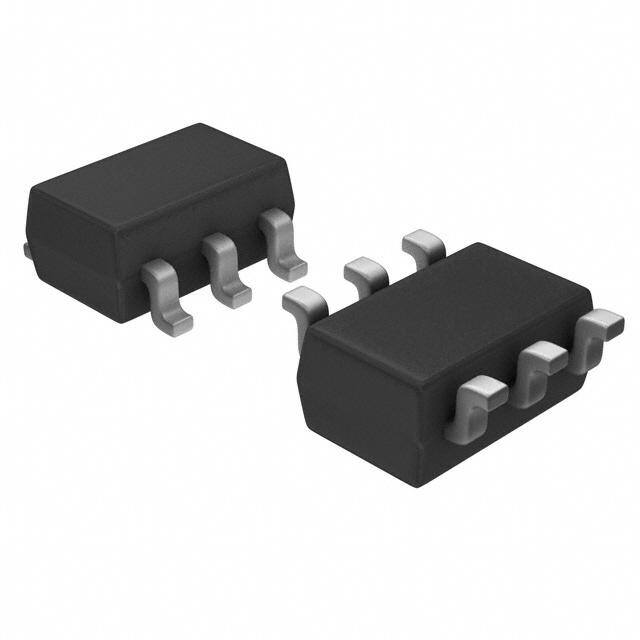
 Datasheet下载
Datasheet下载


